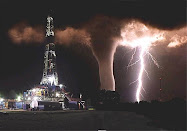 While I admire the success and promise of the X Prize for aerospace, so many government incentives are just plain stupid. Either the agencies who propose them or the public officials who vote for them are incompetent, corrupt, or both.
While I admire the success and promise of the X Prize for aerospace, so many government incentives are just plain stupid. Either the agencies who propose them or the public officials who vote for them are incompetent, corrupt, or both.One example is the L Prize offered by the US DOE for a 60-watt bulb equivalent that uses less than 10 watts, looks like the old incandescent light bulb, and must replace the standard 60 watt light bulb in fixtures. The L Prize was specified for US-made LED lighting, since the Federal and at least one state government (California) has mandated that incandescent bulbs will not be imported, manufactured in the US (or stocked in California). The stupidity has to do with the mandate for a bulb-looking bulb. That shape concentrates all the heat and destroys the LED. With half a brain, the Prize would have allowed manufacturers to make a bulb in a torus or linear or horseshoe shape, that would have done the lighting trick and met the cost and price requirements a year earlier. To date, there is now no winner, and the only candidate has a shorter life than it should, 25,000 hours vs over 50,000 hours for most LED’s, and a price of $50 per bulb, vs a target price of $22. If you look at the spec for the prize, you can see that someone went to a lot of trouble getting technical data for such things as dimmers, line spikes, radio emissions, and color temperatures. Who was responsible for the thing going pear-shaped? I’d like to know.
 Ethanol is another example. When we could buy 100% gasoline and get 22 miles per gallon, we were told that environmental requirements mandated the replacement of MTBE and leaded fuels with ethanol. A few million rubber gaskets later, we were in compliance, at maybe 21 MPG. Then the ethanol went up to 15% and now 20%, claiming this would cut green house gases and CO2 production because the ethanol molecule has some oxygen in it. It’s pretty clear that growing food crops such as corn, harvesting, mashing and distilling moonshine for fuel is not only a net detriment to CO2 production, but the reduction in mileage to 18 MPG is ruining any possible net emissions benefit. OK, we all know it’s a farm subsidy for Archer-Daniels-Midland and a few other big agro businesses. We also know its the heart of a tax and farm subsidy expense that could go a long way toward balancing our Federal budget. We are now finding out that the ethanol content absorbs water from the air and causes rust in various engine components, especially injectors and gas tanks. We can expect leaky gas tanks in the older vehicles we now drive, and a leaky gas tank is a giant rolling Molotov cocktail.
Ethanol is another example. When we could buy 100% gasoline and get 22 miles per gallon, we were told that environmental requirements mandated the replacement of MTBE and leaded fuels with ethanol. A few million rubber gaskets later, we were in compliance, at maybe 21 MPG. Then the ethanol went up to 15% and now 20%, claiming this would cut green house gases and CO2 production because the ethanol molecule has some oxygen in it. It’s pretty clear that growing food crops such as corn, harvesting, mashing and distilling moonshine for fuel is not only a net detriment to CO2 production, but the reduction in mileage to 18 MPG is ruining any possible net emissions benefit. OK, we all know it’s a farm subsidy for Archer-Daniels-Midland and a few other big agro businesses. We also know its the heart of a tax and farm subsidy expense that could go a long way toward balancing our Federal budget. We are now finding out that the ethanol content absorbs water from the air and causes rust in various engine components, especially injectors and gas tanks. We can expect leaky gas tanks in the older vehicles we now drive, and a leaky gas tank is a giant rolling Molotov cocktail. The whole network of environmental incentives and disincentives needs careful scrutiny by people with more brains and fewer political objectives. My guess is that it costs us at least a full percentage of GNP. When GNP growth lags population growth plus service on the national debt plus government admin costs, we get poorer as a nation.
Whenever government tilts the economic playing field with a subsidy or a restriction, it is essentially substituting centralized planning for natural market forces. The more this happens the less effective the market forces are going to be at restoring balance to the economy. We learned this lesson in spades when the Feds subsidized Fannie and Freddie to become the mortgage backers of last resort. We will soon see the results of diverting 16% of the national product through the Byzantine funnels of PPACA (Obamacare). We have so far fought valiantly to avoid the next biggest boondoggle, Cap & Trade.
Don’t look to China’s planned economy for a different lesson. China is moving along quickly toward a market economy, while the U.S. is moving in the opposite direction toward a planned economy. Why did China decide to liberalize? They had a few decades to watch the gross distortions caused by successions of Five Year Plans and the demise for the USSR under the extremes of planned economy. China still faces horrible distortions from past exercises in central planning in areas such as rural health care, food distribution, sanitation and housing.
Here’s a creative thought: Politics in a democracy represent the discounted present value of future expectations. If so, ours are in a downslide and China’s are rising.


No comments:
Post a Comment